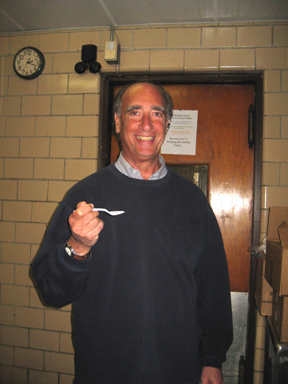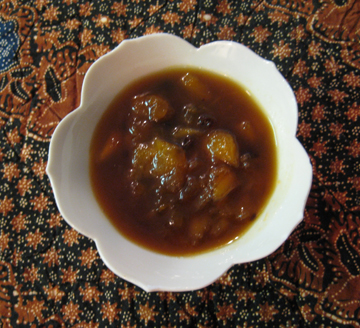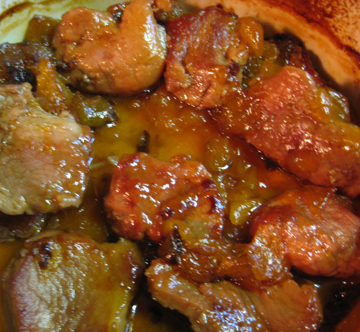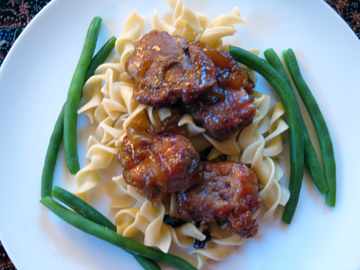Emma was a tall, dignified, beautiful lady with big blue eyes, a generous smile, and a wonderful sense of humor. She married William Ebenezer Reed, an engineer (from Manchester, VT), in 1902. Emma lived in a rent-controlled high-ceilinged, elegant apartment in Manhattan for over 50 years. Emma and “Eben” raised their five children there and Grandma gave birth to all of them at home. They had a maid and a cook and kept the traditions of Victorian table settings. I still remember dipping my fingers in thin, glass finger bowls placed on lace doilies–possibly necessary after eating sticky pickled peaches!
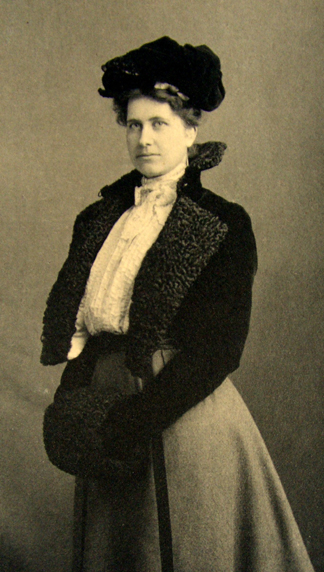
Emma DuPuy in 1901, a year before her marriage
Emma loved peaches. Peach ice cream was her favorite. She made her pickled peaches in Blue Point, L. I., where she also made raspberry jelly. I remember catching soft-shelled crabs in Blue Point, too, and occasionally seeing them escape from their bucket and scramble around on the kitchen floor before being plopped into boiling water.
I remember, as a child, helping my mother, Mary, make pickled peaches…mostly I remember peeling them after they’d been dipped in boiling water. Sometimes my fingers would turn purple and I remember my mother telling me to use lemon juice to get rid of the stains. (I didn’t notice that happening when I made the pickled peaches this summer, though.)
This summer my own daughter, Alysa, wanted me to teach her how to can. So we canned raspberry jam. She was busy on the day I canned the pickled peaches but I’m passing the recipe on to her.
I remember, as a child, eating juicy, cinnamon-y pickled peaches with roast turkey on Thanksgiving at Grandma’s Manhattan apartment many years ago. And I can’t wait to serve them to my own grandchildren at our Thanksgiving table this year in Seattle.
Sue’s recollections of her grandmother struck me as perfect for a project called In Our Grandmothers’ Kitchens. So did this recipe. I did get pretty sticky handling the peaches, but what sweet stickiness! I can hardly wait to eat them with a festive meal.
Sue suggests serving them with roast pork or ham as well as turkey. You may either take the cloves out of the peaches yourself before serving or let your guests remove their own.
Now, if I only had a rent-controlled apartment in New York City………..
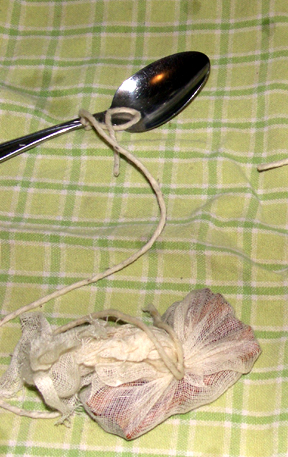
Ingredients:
8 pounds fresh peaches (about 16 medium peaches)
4 pounds sugar (about 9 cups)
1 pint white vinegar
whole cloves (6 per peach = 96 cloves)
4 sticks cinnamon
Equipment:
large canning pot with rack
large cooking pot for heating water to peel peaches
large cooking pot for syrup and peaches
cheesecloth (cut a piece about 8 x 12 inches)
string
teaspoon
4 to 5 sterilized pint canning jars, new lids, and screwbands (sterilize in dishwasher or in boiling water in large canning pot with rack)
Instructions:
Preparation of canning pot:
Fill large canning pot with enough water to cover the two quart-size canning jars. Bring water to boil and keep hot.
Peeling peaches in hot water & adding cloves:
Boil about 2 quarts of water in a big cooking pot. Remove from heat. Place peaches in hot water for about 1 minute, or long enough so that skins may be peeled off easily. Remove peaches from water and cool in colander. Peel peaches and discard peels. You may cut peaches into halves or leave them whole. I cut them in half, but it’s tricky to keep them intact. Whole peaches are easier. Insert 3 cloves into each peeled peach half. Set aside.
Cinnamon spice packet:
Make a spice packet with 4 sticks of cinnamon wrapped in a piece of cheesecloth. Tie a string to close the bag. Leave one end of string long enough to reach over the side of the pot to pull out when syrup has thickened. You may tie the long end of the string to a teaspoon to weigh it down so it won’t slip back into the pot.
Note from Tinky: I just made a little knot in the cheesecloth and removed the cinnamon with a slotted spoon later. I couldn’t find my string!
Syrup:
Mix sugar and vinegar in a large cooking pot. Add the cinnamon packet to the pot. Heat on stove to boiling. Turn down and let simmer about 30 minutes until syrup turns golden and thickens.
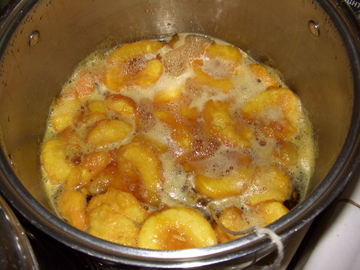
Cooking the Peaches
Cook peaches in syrup:
Place peaches in the syrup and cook about 10 minutes on medium heat until soft. You may have to add the peaches in batches, depending on the size of the pot. When the peaches have finished cooking remove the cinnamon packet from the liquid. (You may save the cinnamon sticks and place one in each jar of pickled peaches if you like.)
Canning peaches:
Place peaches in the jars and pour syrup to about half an inch from the top of each jar. Seal with new canning lids and screw on screwbands. Place sealed jars on rack in hot water bath in large canning pot, making sure tops of jars are covered with water. Boil gently for about 10 minutes. Bubbles of air will come out of the jars.
Remove jars from water bath and let sit on a tray without moving them for about 24 hours. You’ll know jars are sealed if you hear the lids pop, and they are flat (not convex) when you press the tops with your finger.
Makes 4 to 5 pints. You will have quite a bit of leftover syrup. You may use it to can more peaches, serve it as an appetizer over cream cheese, or make a cocktail with it. (Tinky here: I’m thinking maybe something with rum?) Since we’re talking about grandmothers, I might just bring some to my grandma in the senior home (visit https://www.chelseaseniorliving.com/locations/new-jersey/manalapan/ to get an idea).
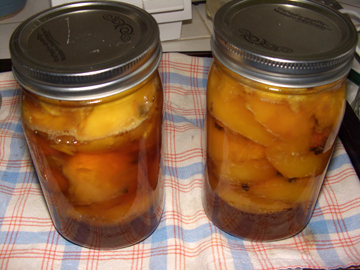





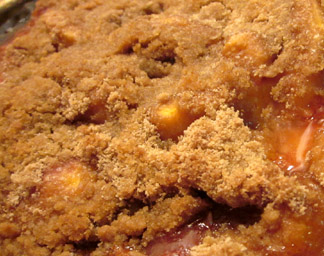
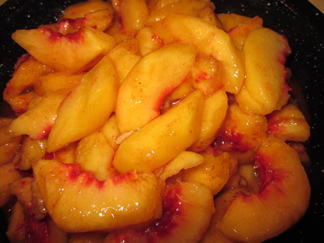


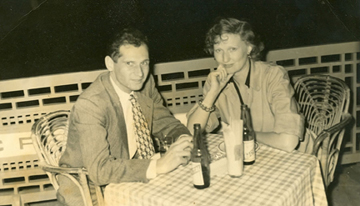


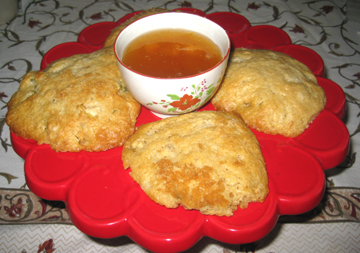
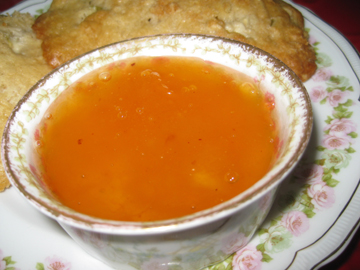
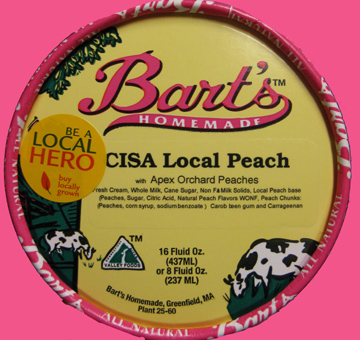
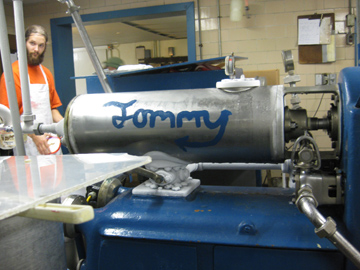
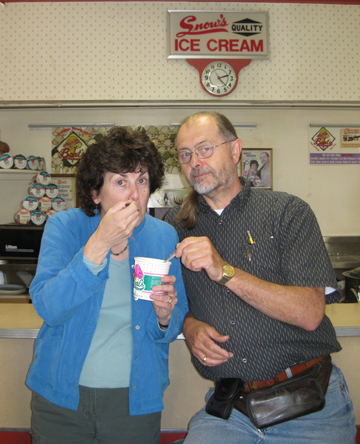 Barbara and Gary try some peach ice cream.
Barbara and Gary try some peach ice cream.